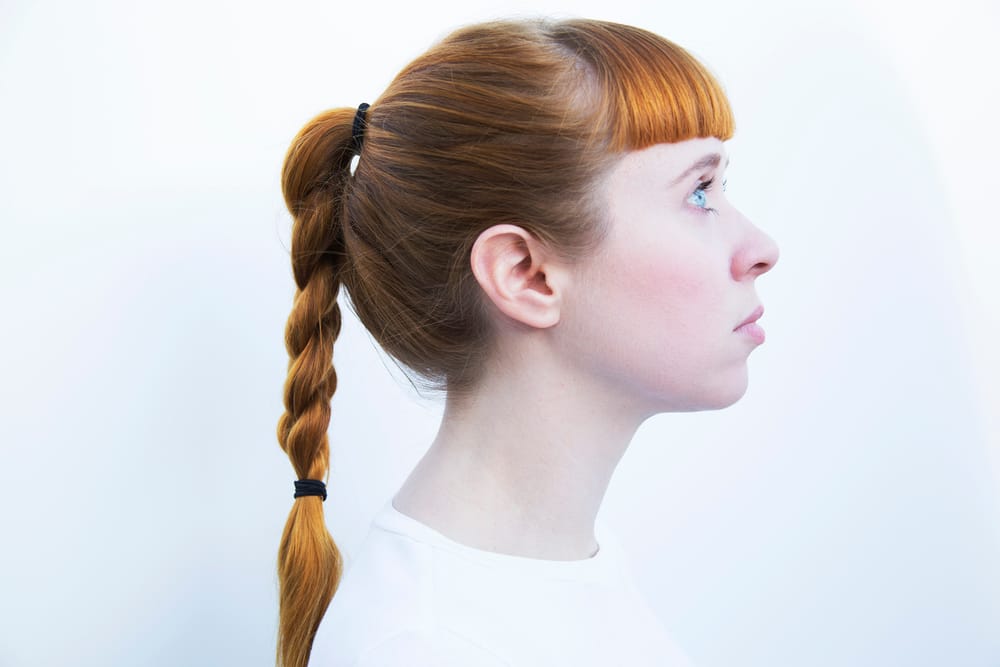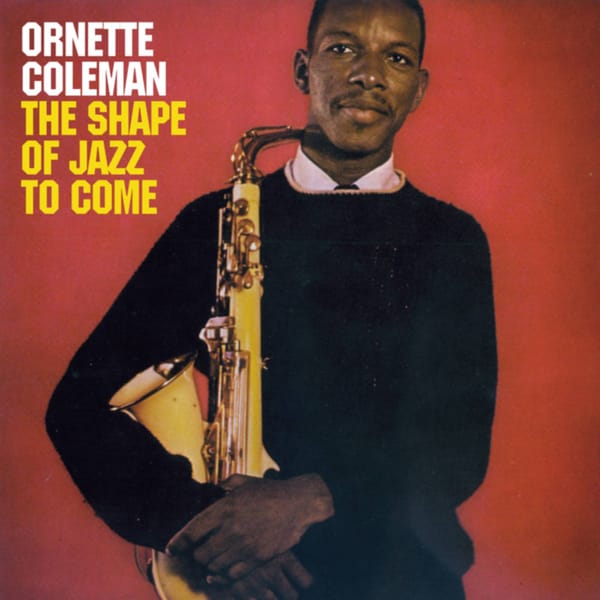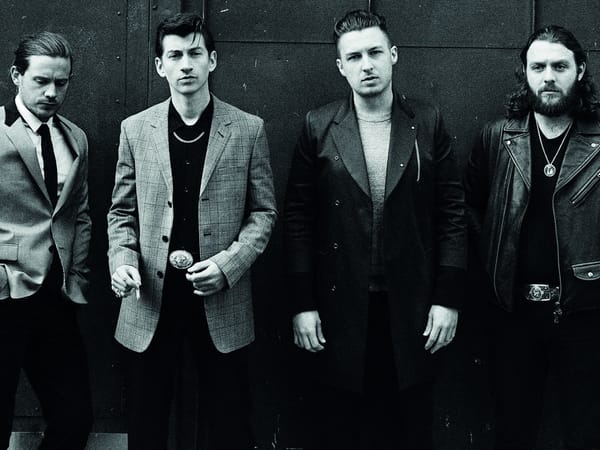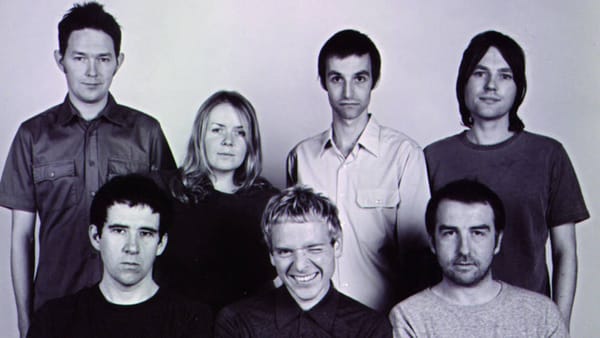Women. Music. Power: A Century of Female Electronica
Fred Fyles takes us on a tour through the history of the early pioneers of electronic music

Recently, an image has been widely circulated on Twitter, showing what the Reading/Leeds 2015 lineup would look like if all the male-only bands were removed. Published by the music blog Crack In The Road, it makes for a grim indication of the modern music industry; a wealth of band names has instead become a sea of vibrant yellow, like an garish alarm warning us, “there is a problem”. This year, 89.6% of the festival’s lineup consists of solo men, or all-male bands; remarkably, this isn’t actually that bad – feminist organisation female:pressure, a collective of musicians and artists pushing for equality, have stated that “nowadays, a 10% proportion of female artists can be considered above average”. Although we are now 15 years into the new millennium, it seems that festival organisers, music promoters, and – indeed – many arts journalists are still stuck in the last century.
However, this isn’t seen as a problem by Melvin Benn. Current managing director of Festival Republic, the UK music promoter who organises Reading and Leeds festivals, Benn has denied the idea that music festivals have a problem with women artists. “The idea that female bands are sidelined is just not there,” he said to Gigwise earlier this year. “Gone are the days where a band was four guys. It’s genuinely gone.” And so why does his festival only feature 3 women-only acts, out of a lineup of nearly one hundred?
The relationship between women and electronica runs back to the 19th Century
Many defenders of such practices have argued that there is an inherent problem with the genre of ‘rock’ as a whole, and festival promoters can’t feature woman-lead guitar music if there simply isn’t any. Aside from the fact that there are innumerable incredible women guitarists working currently (Annie Clark, anyone? Anna Calvi?), such an argument just reminds me of defences of Rockism, that mating call of the NME journalist that strives for ‘authenticity’, only insofar as that translates to ‘white, straight men with guitars’. In his seminal critique of this industry bias, The Rap Against Rockism, journalist Kelefa Sanneh argued that Rockism actually amounts to little more than an excuse for sexism, racism, and homophobia. “[Rockism] reduces Rock and Roll to a caricature, then uses that caricature as a weapon... could it really be a coincidence that rockist complaints often pit straight white men against the rest of the world?”
When it comes to how women are treated in the music industry, I feel that Benn would do well to listen to actual female musicians, such as Icelandic artist Bjork; in an interview with Pitchfork earlier this year, the creative auteur lamented the bias against women within the industry, mentioning multiple instances where the work she had done was credited to male producers. “I want to support young girls who are in their 20s now. You’re not just imagining things,” she said, “Everything that a guy says once, you have to say five times.”
Bjork, whose achievements are too many to list but include 14 Grammy Award nominations, a Cannes Film Festival prize for Best Actress, and an upcoming Museum of Modern Art retrospective of her 30-year career, has carved out a space for herself in a genre that is, perhaps, most open to gifted women wanting to make music on their own terms: experimental electronica. Although the genre’s openness towards women may be explained by the fact that anyone with a laptop can produce music now, the relationship between women and electronica actually runs far deeper, all the way back to the 19th Century, and Ada Lovelace.
What these women composers had in common was a strong academic background
Lovelace, often described as the world’s first computer programmer, worked on Charles Babbage’s Analytical Engine; her notes describe what is now known as the first algorithm designed to be carried out by a machine, and pointed out a flaw in Babbage’s equations, making her the world’s first debugger. Described by Babbage as the “Enchantress of Numbers”, she saw the potential for computers to be used as a social, collaborative tool, as opposed to merely a means of calculation. In her notes, she speculated that computers may “compose elaborate and scientific pieces of music of any degree of complexity”, thereby also affording her the title of the mother of electronic music.
However, it wasn’t until a century later that a woman composed a work scored for electronic instruments; Johanna Beyer, a German-American composer who moved in circles with other luminaries like Henry Cowell and John Cage, premiered her work The Music of the Spheres in 1938. An atonal masterpiece, the work’s ominous high-pitched drone seems to precede the work of György Ligeti in Stanley Kubrick’s 2001: A Space Odyssey. In fact, Kubrick had a strong relationship with the electronic music scene, enlisting composer Wendy Carlos to perform the scores for two of his most popular films: A Clockwork Orange and The Shining. Carlos became well known for her album Switched-On Bach; first released in 1968, the album consisted of JS Bach pieces performed on the then-novel Moog synthesizer, and helped contribute to a significant interest in electronic music. It evidently captured the public’s imagination, becoming one of the first classical music albums to sell over 500,000 copies and picking up three Grammy Awards along the way.
The 1970s saw an explosion of interest in electronic composition. It was during this time that Laurie Spiegel gained invaluable experience in electronics, working for audio synthesiser laboratories. Spiegel’s work is beautifully intricate, generated using complex algorithms, and in 1977 her interpretation of Johannes Kepler’s _Harmonices Mundi _became the opening track of the golden record sent off in the Voyager spacecraft. In August 2012 Voyager I passed into interstellar space, making Spiegel one of the furthest reaching composers in human history.
What all these women had in common was a strong academic background, something that is understandable considering the prohibitive cost of early synthesizers, which meant that only large institutions were able to afford them. The fact that educational equality did not enter into US public law until the Women’s Educational Equity Act was passed in 1974 only makes the achievements of these composers all the more impressive.
Holly Herndon's music lies half-way between academia and euphoria
And it wasn’t only in America that the relationship between women and electronics was fruitful; in 1958, at the request of composer Daphne Oram, the BBC Radiophonic Workshop was founded to provide compositions and sound effects. Oram set up on her own after less than a year, establishing her own studio where she perfected the ‘Oramics’ technique, in which drawings on cellophane film are translated into abstract electronic compositions. Oram’s mantle would be taken on by Delia Derbyshire, who transferred to the Radiophonic Workshop in 1962 and a year later produced the iconic theme tune for the _Doctor Who _series, leaving an indelible mark of British culture.
The long line of exceptional female composers has continued to this day, with numerous women creating music that transcends the boundaries of art and music. For some of these artists, such as Planningtorock, the political struggle for equality is at the front and centre of their music; their most recent album, All Love’s Legal, directly confronts the unequal power structures at the heart of society. ‘Misogyny Drop Dead’, for example pairs lines like “degenderise all intellect” with a funky bassline and skittering drums, while ‘Let’s Talk About Gender Baby’ has singer Jam Rostrum mistily invoking gender politics over stabbing synths. Planningtorock have also collaborated with Swedish sibling duo The Knife, whose Shaking the Habitual was a highlight of 2014, lauded in both the mainstream and alternative press for its innovative use of abrasive sounds.
On the Hyperdub label, perhaps one of Britain's best known experimental electronic record labels, there are a number of women producers represented: Jessy Lanza, for example, whose debut album _Hold My Hair Back _was hailed on its release in 2013, praised by Pitchfork for its “sense of self and attention to detail”, and garnered a nomination for the Polaris Prize; Laurel Halo, a classically trained musician whose switch to electronica is a boon for us all, gifting us with albums like Quarantine, a combination of jazzy instrumentals, sludgy drones, and skittering dubstep; and Fatima Al Qadiri, an American-based musician and visual artist, whose upbringing in Gulf War-era Kuwait fed into her Desert Strike EP, and whose 2014 debut LP Asiatisch aims to take us on a “virtual road through an imagined China”.
The internet has created a forum for people to criticise the lack of diversity
One of my favourite artists working right now, however, is Holly Herndon, an American composer who has divided her time between Berlin and Mills College, California. The resulting music has a sensibility that lies halfway between academia and euphoria, like Stockhausen taking on the 02:00 set at Berghain. Herndon refutes the widely accepted opinion that computers are cold and impersonal, arguing instead that the laptop not only has the ability to unlock many people’s musical potential, but also forms a personal documentation of the self. To that end, her music revolves around the intimate. Her debut LP Movement uses gasps and breathing as a basis for tracks, weaving them around densely layered abstract electronics, while the lead single of her recent EP Chorus is built from foraged audio clips of YouTube and Skype, arranged to form a throbbing, foot-tapping monster of a track.
Herndon has spoken about attitudes towards gender within the industry, and remains optimistic about the future for women producers. Speaking to Dazed Magazine in 2014, she said that: “The community of artists I find myself involved with are pretty enlightened with regards to gender issues, and I’m rarely made to feel overly conscious of it when in the company of peers.” However, this attitude does not seem to extend to the general public, or those in charge of the music industry, who hold women to a higher standard than men. Speaking of Kanye West, Bjork said “With the last album he did [Yeezus], he got all the best beatmakers on the planet at the time to make beats for him... Yet no one would question his authorship for a second.” This double standard is endemic to the industry, but it is sad to see it begin to filter into a genre that has historically been a safe space for women composers. But people are beginning to fight back; while the internet has created a forum for people to express their frustrations at the lack of diversity, last year’s Wysing Arts Centre’s festival of art and music saw a line-up almost exclusively focussed on women in experimental and electronic music and art. They called this year’s iteration_ Space-Time: The Future_, a direct allusion to how women will shape the genre’s future, just as they laid its foundations in the past.









